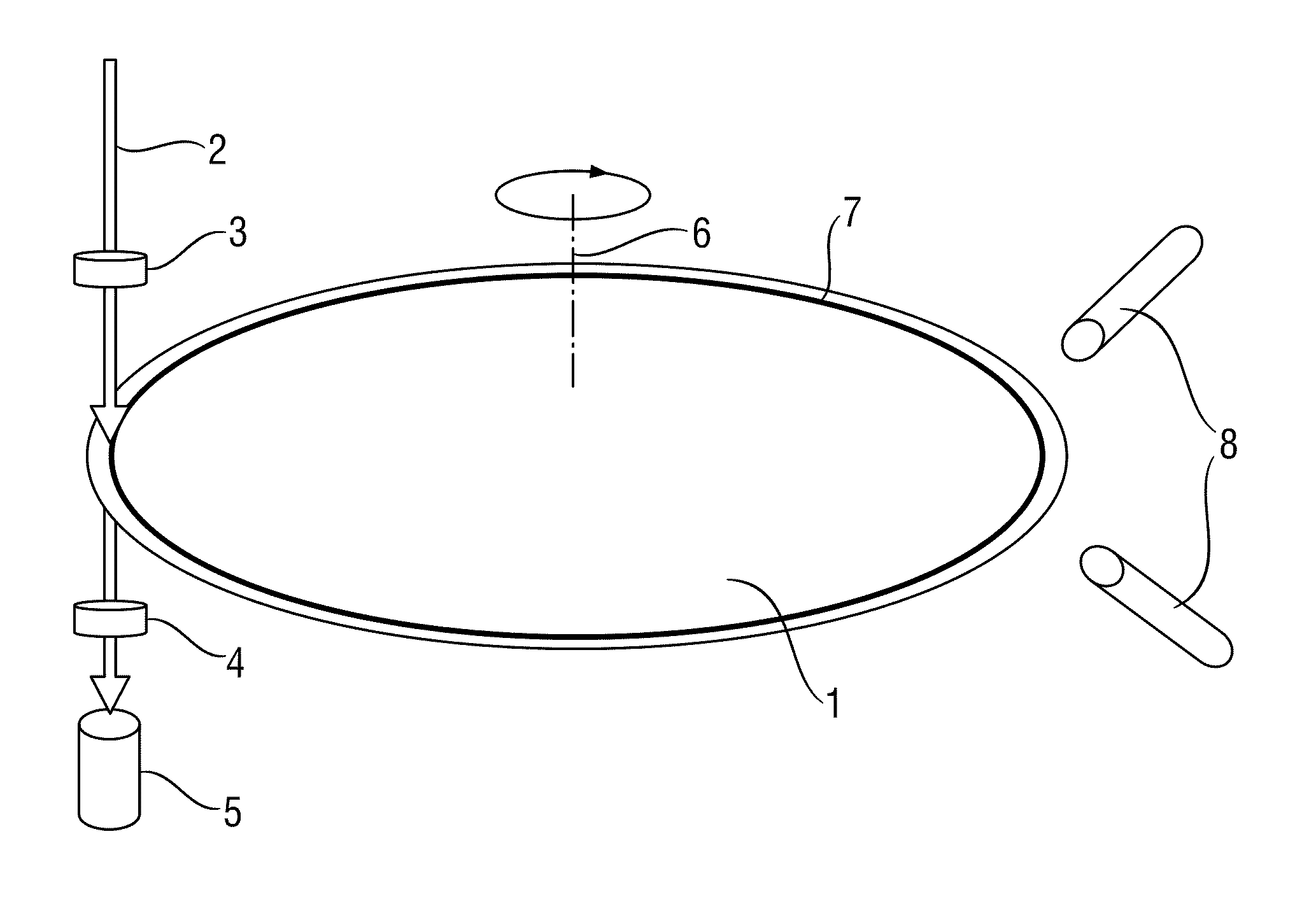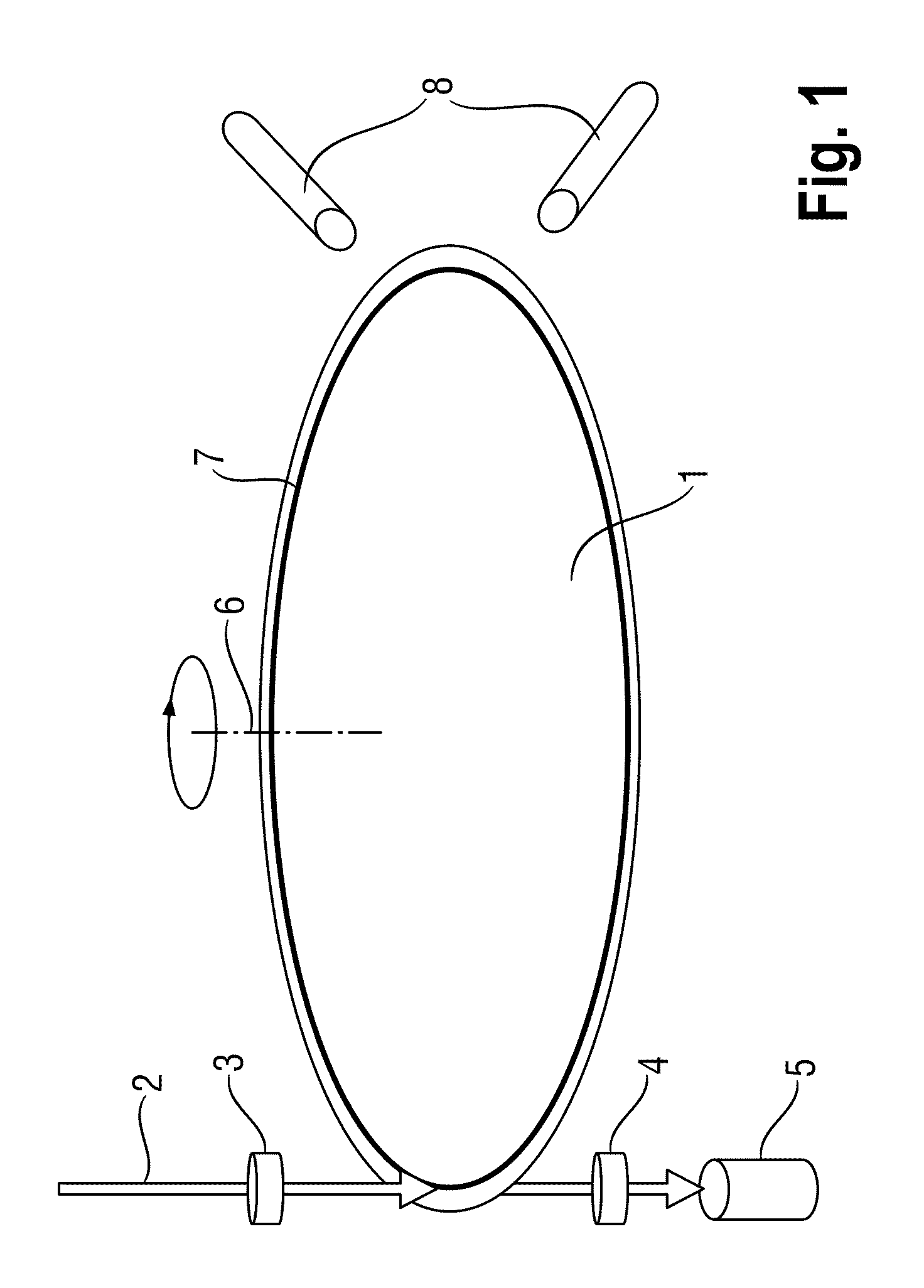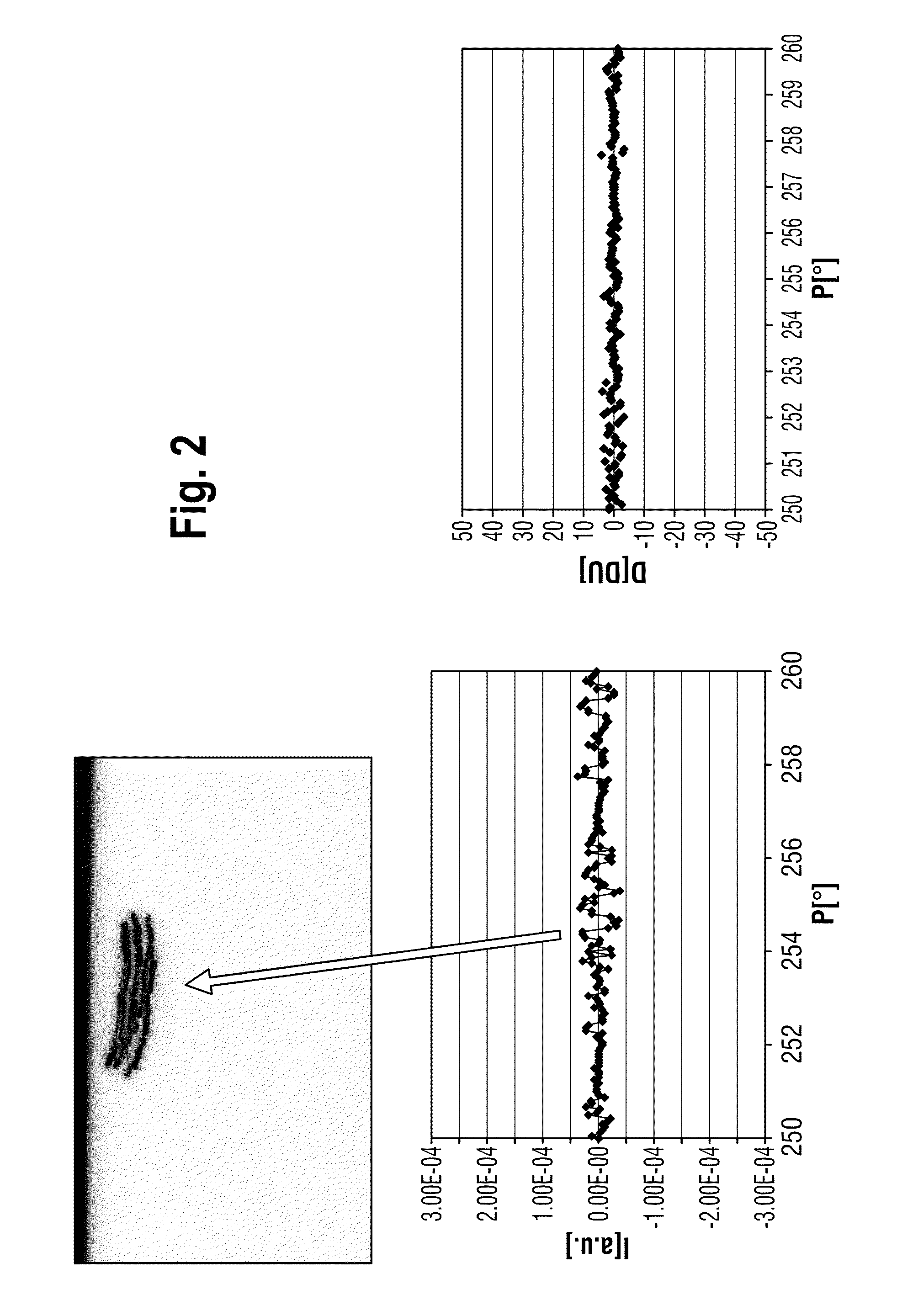Method and Apparatus For Examining A Semiconductor Wafer
a semiconductor and apparatus technology, applied in semiconductor/solid-state device testing/measurement, instruments, television systems, etc., can solve the problems of untreated edge of silicon wafer sliced from a single crystal with a comparatively rough and non-uniform surface, source of disturbing particles, and spalling, so as to increase the meaningfulness of edge inspection and increase the risk of breaking
- Summary
- Abstract
- Description
- Claims
- Application Information
AI Technical Summary
Benefits of technology
Problems solved by technology
Method used
Image
Examples
Embodiment Construction
[0012]In contrast to the known methods for the detection and classification of edge defects, the method of the invention does not just use an imaging method, but rather combines the latter with data from a photoelastic stress measurement, i.e. with information about stressed regions in the material, in order to unambiguously identify edge defects that are critical with respect to breakage.
[0013]The imaging methods used can be optical imaging methods (using one or more cameras), electron-optical methods or atomic force microscopy (AFM).
[0014]Optical imaging methods examine the wafer edge by means of bright field or dark field optics or the combination of both. Typically, the wafer surface is examined on the front and rear sides in a region from the outermost margin of the wafer to approximately 5 mm inward, such that a sufficiently large overlap with the much more sensitive methods of front and rear side inspection arises in the edge region. The illumination of the wafer edge in brig...
PUM
 Login to View More
Login to View More Abstract
Description
Claims
Application Information
 Login to View More
Login to View More - R&D
- Intellectual Property
- Life Sciences
- Materials
- Tech Scout
- Unparalleled Data Quality
- Higher Quality Content
- 60% Fewer Hallucinations
Browse by: Latest US Patents, China's latest patents, Technical Efficacy Thesaurus, Application Domain, Technology Topic, Popular Technical Reports.
© 2025 PatSnap. All rights reserved.Legal|Privacy policy|Modern Slavery Act Transparency Statement|Sitemap|About US| Contact US: help@patsnap.com



